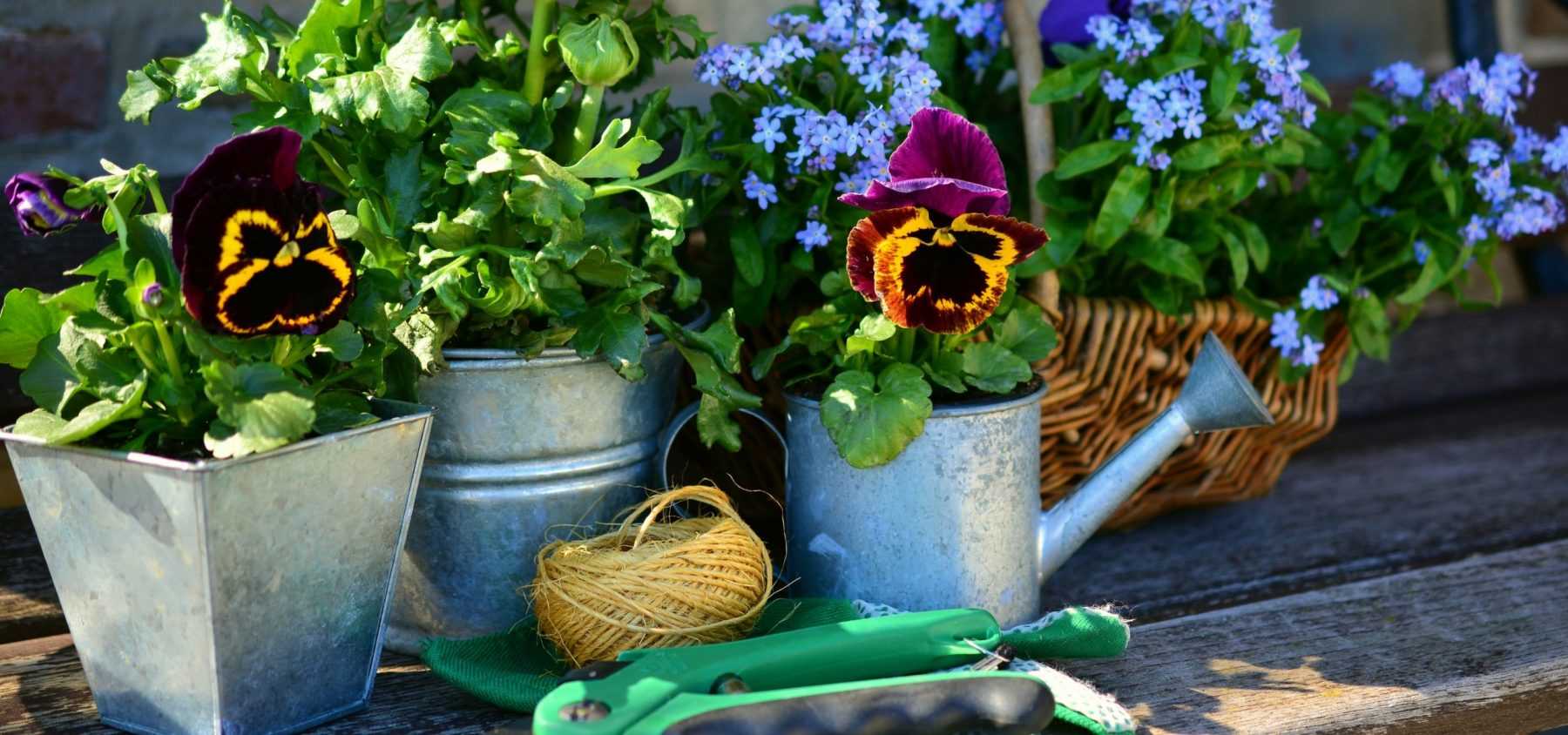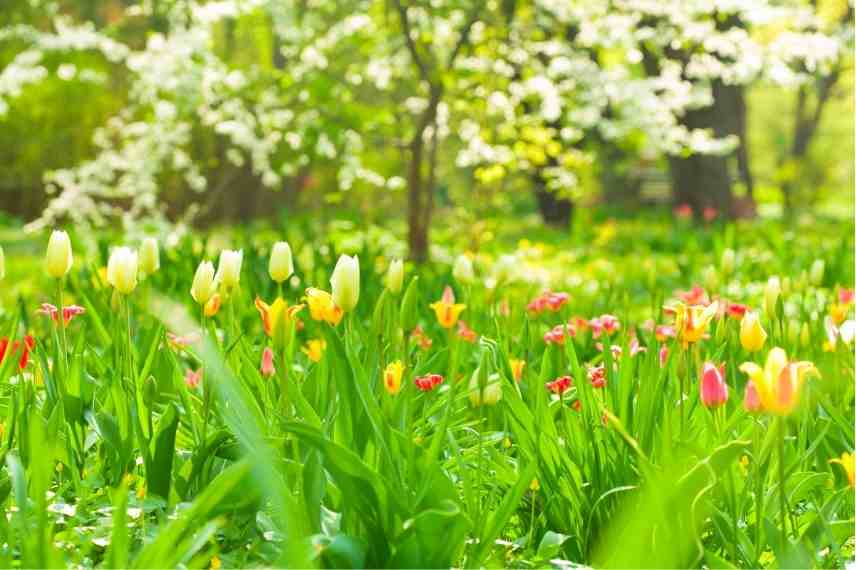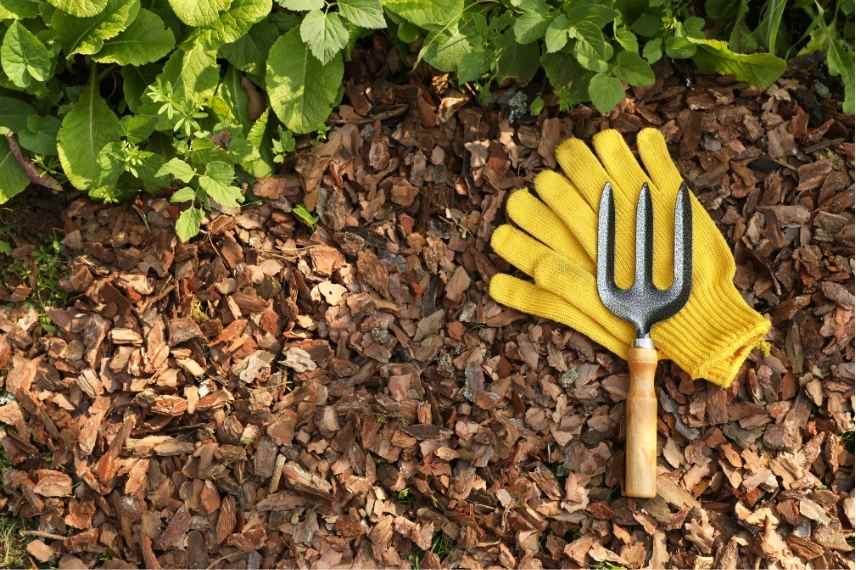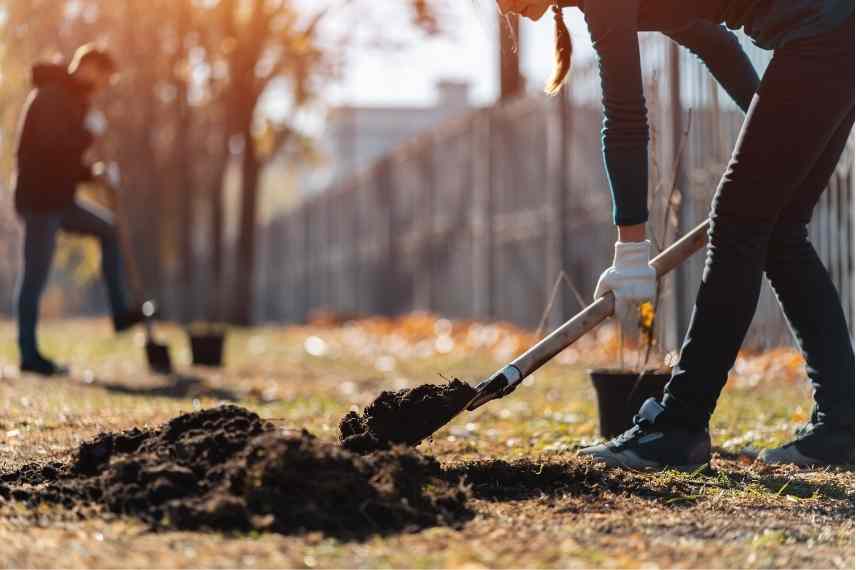
Every Season Its Gardening
Gardening Calendar
Contents
Welcome to our seasonal gardening guide! To achieve a lush and healthy garden, it’s important to know when and how to carry out various gardening tasks. In this article, we provide practical advice on garden jobs for each season, from early spring through winter. So, get your gardening tools ready and prepare to discover how to care for your garden all year round!
The first spring": from 1st February to 21st March
When nature awakens, it’s time to clear the way and start planting as soon as possible. As vegetation prepares to revive, a thorough clean-up is essential: weeding and forking flower beds, finishing pruning trees with loppers, shrubs and roses with secateurs, and cutting back remaining grasses and perennials with shears. Pruning roses is best done as soon as buds appear. Fruit trees, except stone fruits which should be pruned in summer, need pruning before their spring growth.
- Now is the time to aerate flower bed soil with an aeration fork, weed with a hand fork or weeding knife, and work in some fertiliser. Choose a formula not too rich in nitrogen. Remove bittercress and groundsel seedlings which can self-seed rapidly. Pamper your lawn by removing moss with a scarifier and aerating for a beautiful carpet.
- Define lawn edges with a sharp spade or edging iron.
- You can already sow flower seeds, vegetables and plant hardy annuals like lavatera, cornflowers and poppies. Add flowering biennials (pansies, primroses) to complement early blooms of hellebores or witch hazel.
- A simple horticultural fleece will protect seedlings from late frosts. Deter hungry slugs with organic iron-based pellets. Remove covers when temperatures rise to prevent rot.
- Avoid planting camellias in morning sun where winter temperature fluctuations could damage them. Brush snow off foliage to prevent leaf scorch.
- Paint fruit tree trunks with “whitewash” to prevent insect and disease spread.
True spring: from 15th March to 22nd May
- Weed regularly to prevent weeds from going to seed and potentially spreading throughout the garden. Hoe during warm, dry weather to eradicate them. Pay special attention to pond edges where weeds grow particularly fast.
- Begin the first lawn mowings of the season, followed by a specific fertiliser after each mowing.
- Gradually remove winter protection before it hinders plant regrowth.
- Plant hardy specimens: perennials, climbers, trees, shrubs – especially heather plants which can be planted while in flower.
- You can now plant your herbs in warm, sunny soil – parsley, chervil and mint prefer cooler conditions.
- After the last frosts (mid-May, after the Ice Saints period), it’s time to plant tender annuals (geraniums, impatiens, petunias) as well as your potted plants and containers. Place them in partial shade and sheltered spots to gradually acclimatise them to outdoor conditions and sunlight. For extra protection, cover them with simple horticultural fleece.

The start of summer
Now is the time to think about maintenance and care before the scorching summer days.
- To encourage abundant and prolonged flowering, remove spent flowers and unnecessary fruits with secateurs.
- Break up the soil with a hoe and water in anticipation of potential restrictions in some regions. You can install an automatic watering system to save water: a network of porous hoses or drip irrigation. Spread a generous layer of mulch over bare soil.
- On terraces or balconies, also plan for automatic watering and top with a layer of mulch. For hanging baskets, use water-retaining granules when planting, combined with slow-release fertiliser. Consider adding some decorative foliage plants to your flower beds and containers to enhance your arrangements.

High summer
Watering in the cool of the day is an opportunity to detect insects and diseases before they spread too widely.
- Don’t hesitate to prune or sacrifice overcrowded branches. Grass may dry out—it’s not a problem, as it will recover after the autumn rains.
- Remember to prune non-reblooming roses (climbing or bush varieties) with secateurs to encourage beautiful flowering the following year. To keep clumps compact, trim lavender with shears as soon as they finish flowering. If you’re overrun with bindweed, you can tackle it with a specific herbicide spray that foams on contact.
- Late August to early September is the ideal time to take cuttings, using the ‘closed-case’ method, from plants with semi-hardened stems (firm at the base) to avoid rot. This applies particularly to roses, fuchsias, penstemons, and hardy geraniums.
- From September, you can divide and replant mature clumps of herbaceous peonies in still-warm soil, ensuring the crown remains above ground.
- Monitor oxygen levels in ponds, as low oxygen encourages unsightly algae that need regular removal. Introduce oxygenating plants to quickly restore biological balance.
- Take advantage of summer for masonry work while the ground is dry and stable. It’s the perfect time to build a pond, pergola, or patio.
Early autumn
When early autumn feels like an Indian summer, continue watering while avoiding the foliage to limit the risk of powdery mildew development.
- This is the perfect time to take cuttings from tender plants such as geraniums, shrubs, and especially hydrangeas.
- You can plant spring-flowering bulbs, such as tulips, hyacinths, crocuses, daffodils, and fritillaries.
- Autumn is an excellent time to create rich homemade compost. Gather fallen leaves and mow over those on the lawn to collect them. The resulting mixture is ideal for producing humus. Mix well, ensuring the pile is neither dry nor waterlogged. Cover with a black tarp to speed up fermentation. In spring, mix again. Your compost will be ready to use by the following autumn.

Full autumn
The transformation of the landscape is spectacular: the vegetation turns red, garnet, purple, and orange-yellow. This alchemy never repeats itself in the same way—it depends on temperature fluctuations, humidity, rainfall, and wind.
- It’s the season for chrysanthemums, but many other perennials hold their own. Even faded, ornamental grasses retain their charm. Keep the most decorative ones—they’ll fill your flowerbeds throughout winter.
- Now is the time to plant as long as there’s no frost, especially woody plants. “At Saint Catherine’s Day, all wood takes root.” You can plant roses, flowering shrubs, fruit trees, and deciduous or evergreen trees. Help them establish by dipping their roots in a slurry of soil and water before planting. Don’t forget to stake them securely.
- Don’t hesitate to brighten up balconies and terraces too. Add shrubs, perennials like heathers, and flowering plants such as chrysanthemums or cyclamen. Consider ornamental cabbages, whose foliage colours under frost. Be cautious—don’t forget to protect tender plants. Often, a thick layer of dead leaves around the base will suffice. Otherwise, wrap more delicate plants in horticultural fleece.
Winter
The heart of winter is the time to clear flower beds, borders, trees, shrubs, and roses.
- This is the ideal period to reshape certain trees that have become too dense or imposing. Based on last year’s memories, we can sketch new plans: creating new borders to mark out now, transplanting misplaced plants, designing a new perspective, or installing new structures (pergola, arch, fence).
- Avoid walking on frozen grass, ensure frost-sensitive plants are protected, mark out the pond hidden under ice or snow, and remove snow if it weighs down branches or risks damaging plants.
- It’s advisable to protect tree trunks and branches from rabbits or deer searching for food.
- Remember to carry out winter orchard treatments against larvae and diseases before vegetation awakens and regrows.
- Take advantage of thawing conditions to spread manure or compost, which you can work in with a fork.
- Sow hardy-seeded trees and shrubs in trays with fine mesh to protect them from rodents.
- When the weather is too harsh, it’s time to assess equipment: sharpening tools, servicing the lawnmower, and maintaining tools to work efficiently once spring returns.
- Subscribe!
- Contents

































